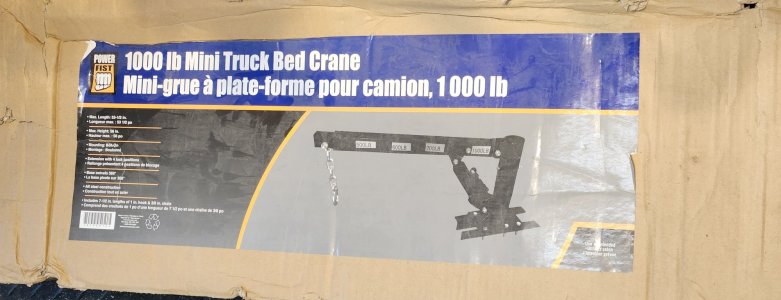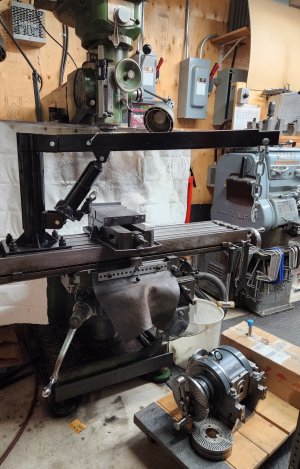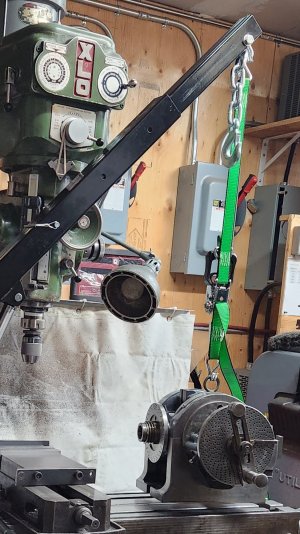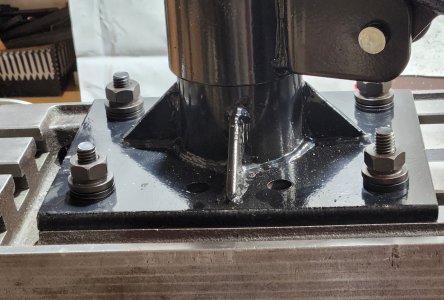I agree. But the angle is only 20°. Maybe someone can do the math to determine what the forces are. The length of the boom to the center of the post is 41".
Might as well say 4 ft acting on a 4 inch bolt span. 138pounds might as well say 150 to be conservative since there are chains and hooks In other words and other oversights (I always round up to keep the math simple and add some safety factor). So 150 x 4 x 3 = 1800 pounds trying to twist your bed.
@Mcgyver is right about longer nuts but they have to be high strength steel or they simply bend and leave the load focussed. Cast iron doesn't bend, it just breaks. So the load still gets focussed - albeit not nearly so badly. Everything you do to distribute the load helps but not often as much as expected.
Odd unexpected things happen when you have multiple fasteners. You have to do a force diagram. But basically, the leverage introduced by the close fasteners increases the load on the far fasteners. Think of it a bit like a pry bar.
Your bed may be rated for 750 or even 1000 pounds, but that is straight down, not twisting. I don't like twisting.
The bolts attaching to the t-slots are 1/2"-13 Teco, and miraculously the holes in the mouting plate are exactly the spacing of the tables t-slots. I only used 4 bolts, but the plate has provisions for 8 in total.
The number of bolts, their size, and their strength is important in tension loads, but doesn't really improve this situation much. Might even "zipper" to use a term someone else mentioned earlier in another thread. (Obviously I liked it!) Your weak point is the cast iron lips in the T-Slots, not the fasteners.
And I was thinking about a cart, but how heavy does the cart have to be to prevent it from tipping?
If the load is lifted straight up off the cart and then, the cart is pushed under the table the way I described earlier, the cart could be a feather. It's a much better scenario than mounting the lift on the bed.
Obviously, a strong heavy cart would be better that a feather. I just used that to point out that weight isn't a big factor if the load is lifted up and not hung out over the side. Also a steel cart has give - it's not like cast iron.
I'd make a nice heavy steel cart, with wide stance easy roll wheels, and mount your mini-crane to that permanently. You could even add foldable stabilizer legs, etc.






